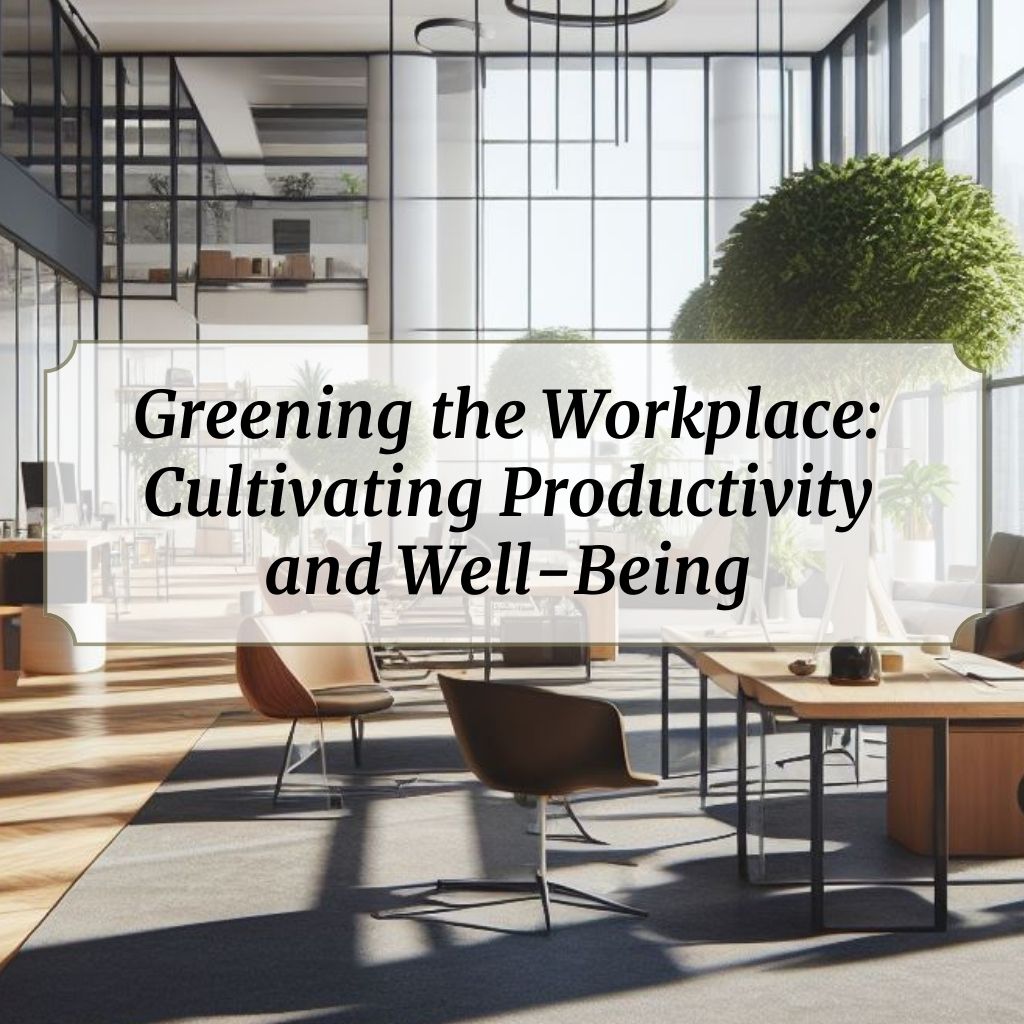
Have you ever considered the impact of indoor plants on productivity and well-being of your workplace?
In this article
Bringing Nature Indoors

In the fast-paced world of professional life, the concept of a plants in the office is a breath of fresh air—literally.
Indoor plants offer more than just visual appeal; they contribute to improved air quality, reduced stress levels, and enhanced creativity.
Greening the workplace involves transforming sterile office environments into dynamic, plant-filled spaces that foster a sense of connection with nature.
Boosting Productivity
Numerous studies have shown that the introduction of indoor plants in the workplace correlates with increased productivity.
For example, a study conducted by researchers at Washington State University found that people with plants in their workspaces reported feeling more productive and had a 12% faster reaction time on computer tests compared to those without plants.
Another study conducted by Exeter University concluded that employees were 15% more productive when workplaces were filled with just a few houseplants.
A study published in the Journal of Environmental Psychology found that employees in offices with plants had lower stress levels and were more satisfied with their work environment.
In light of the data, greening the workplace becomes a strategic investment in the overall efficiency and effectiveness of the team.
Clean Air, Clear Minds
One of the most significant benefits of greening the workplace is the air-purifying power of indoor plants.
Certain plant species have the ability to filter out common indoor pollutants, creating a healthier and more oxygen-rich environment.
From spider plants to peace lilies, incorporating air-purifying plants into the office contributes to cleaner air and, consequently, clearer minds.
Consider the impact of breathing in fresh, purified air as you navigate through your workday. The reduction of pollutants such as benzene, formaldehyde, and volatile organic compounds (VOCs) creates a workplace atmosphere that supports respiratory health and overall well-being.
Greening the workplace becomes a proactive measure for fostering a healthier and more sustainable professional environment.
Stress Reduction
The demands of the modern workplace can often lead to heightened stress levels among employees.
Greening the workplace introduces nature’s calming influence, offering a natural remedy for stress and tension.
Greener office spaces are shown to have the following positive outcomes:
- A positive relationship between access to a green outdoor environment at work and decreased stress has been found in previous studies.
- Plants have been shown to have a calming effect on the mind and body, which can help reduce stress and anxiety levels in the workplace.
- Studies have found that relaxing outdoors, indoor office plants, and office window views were related to less stress.
- The presence of greenery and natural elements can help boost mood and create a sense of calm and tranquillity.
- Exposure to natural environments can decrease heart rate and blood pressure, which are vital indicators of stress levels.
- Green spaces provide an escape from the sensory overload often experienced in urban settings, offering a soothing and calming atmosphere that can help alleviate stress and promote relaxation.
- Greater levels of natural elements exposure were associated with lower depressed mood and higher job satisfaction.
The presence of indoor plants has been associated with lower stress levels, improved mood, and an overall sense of well-being.
Greening the workplace becomes a holistic approach to addressing the mental and emotional well-being of individuals within the professional setting.
Designing with Office Spaces with Green Intent

The integration of indoor plants into office design goes beyond simply placing potted plants on desks.
Greening the workplace involves thoughtful and intentional design, where plants become integral elements of the overall aesthetic.
Creative office spaces leverage the versatility of plants to enhance the visual appeal of the environment.
Employee Well-Being
As workplaces increasingly recognize the importance of employee well-being, greening the workplace emerges as a holistic approach to creating a supportive and health-conscious environment.
The physical and psychological benefits of indoor plants contribute to a positive workplace culture that prioritizes the health and happiness of its employees.
Consider the implementation of wellness programs that incorporate the presence of plants.
From lunchtime yoga sessions in green spaces to workshops on plant care and mindfulness, greening the workplace becomes a collaborative effort between employers and employees to foster a holistic sense of well-being.
Sustainable Practices
In addition to the immediate benefits, greening the workplace aligns with sustainable practices that contribute to a greener future:
- Research has shown that 80% of consumers are more inclined to support companies and brands with a history of sustainability.
- 89% of organizations with high ESG (environmental, social, and corporate governance) ratings outperform others in the market.
- 48% of employees said that they would be willing to take a pay cut if it meant working for an organization that is more environmentally sustainable.
- 64% of Millennials consider a company’s social and environmental commitments when deciding where to work.
- Greening the workplace can bring cost-savings through decreased utility bills and wastage, improve employee morale and health, and demonstrate to customers and partners that the company is taking strides to be environmentally and socially responsible.
- Having plants in the office has been proven to decrease air pollution and increase the mood and productivity of employees.
- A study conducted by the University of Queensland found that greater levels of natural elements exposure were associated with lower depressed mood and higher job satisfaction.
The use of indoor plants as natural air purifiers reduces the need for artificial ventilation systems, promoting energy efficiency.
Furthermore, the incorporation of sustainable and eco-friendly practices in plant care establishes a commitment to environmental responsibility.
Additionally, greening the workplace becomes a symbol of a company’s commitment to sustainability, aligning with the growing global consciousness towards environmentally responsible practices.
A Green Revolution in the Workplace
As we conclude our exploration of greening the workplace, it’s evident that the integration of indoor plants goes beyond mere decoration; it’s a transformative initiative that enhances productivity, promotes well-being, and contributes to a sustainable future.
In the Part 8 of our journey through the world of indoor gardening, we’ll delve into the art of plant styling.







